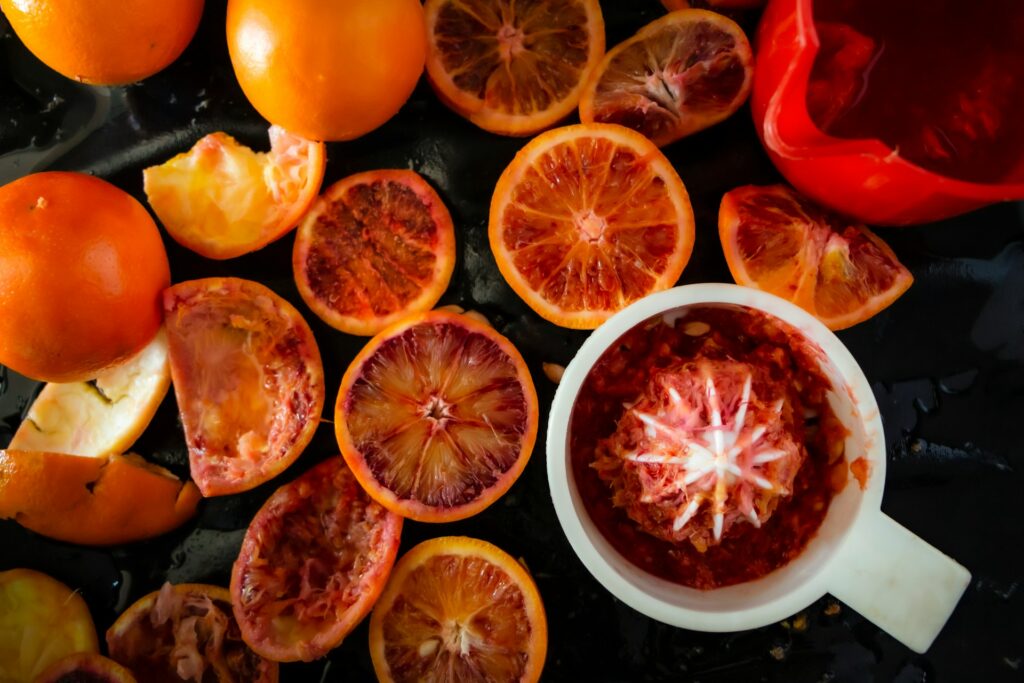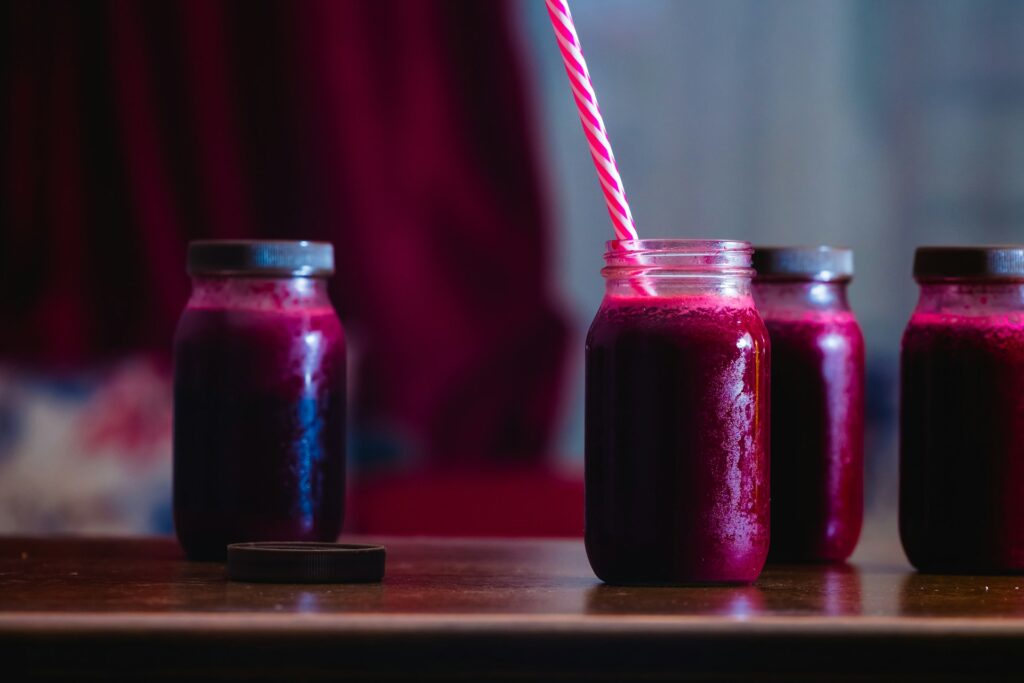Juice Cleanse Detox: Benefits, Challenges, and Tips for Success
Juice cleansing can be a transformative experience—a powerful way to reset your body, eliminate waste, and rejuvenate your health.
But let’s face it: detoxing isn’t always smooth sailing. If you’ve ever felt overwhelmed by detox symptoms like headaches, fatigue, or brain fog, you’re not alone. I’ve been there, too.
On my first extended juice cleanse, I was shocked by the intensity of my detox symptoms. It wasn’t until I used key tools like enemas that I experienced relief—and saw just how much waste was eliminated from my body. Trust me, the difference was life-changing.
In this guide, I’ll walk you through everything you need to know about juice cleanse detox, including preparation, managing detox symptoms, and tips for a smoother, safer cleanse.
Disclaimer
The information shared on this blog is based on my personal experiences and research. It is not intended to be medical advice or to replace consultation with qualified healthcare professionals. Always consult a doctor or health practitioner before significantly changing your diet, lifestyle, or health regimen. What worked for me may not be suitable for everyone. Listen to your body and seek professional guidance for your unique needs.
Why Preparation For The Juice Cleanse Is Essential
Jumping unprepared into a juice cleanse with detox drinks for weight loss and other purposes to improve your well-being, is like setting out on a marathon without training—it’s a recipe for exhaustion.
Proper preparation for a gut reset not only minimizes detox symptoms but also sets your body up for a more effective cleanse.
The key to a successful juice cleanse starts long before you take your first sip of juice.
If your diet has been heavy in mucus-forming foods — such as animal products, starches, proteins, and fats — it’s important to transition gradually. Diving into a cleanse too quickly can release more toxins than your body can handle, leading to uncomfortable detox symptoms during and after the cleanse.
Here’s how to prepare for a juice cleanse detox:
- Ease Off Mucus-Forming Foods: Begin reducing your intake of animal products (meat, dairy, and eggs), processed foods, heavy starches, and fried foods. Instead, prioritize raw fruits, leafy greens, and lightly steamed vegetables to stop those cravings for sugar and unhealthy fats. This gradual shift helps your body acclimate to cleaner foods and reduces the shock of eliminating toxins too quickly.
- Support Detox Pathways: Prepare your body’s detox organs—not just during your juice cleanse but beforehand as well. Your liver, kidneys, lymphatic system, colon, and even your skin play crucial roles in eliminating toxins. Stay hydrated with water and herbal teas, eat fiber-rich foods to support digestion, and avoid toxic substances like alcohol, caffeine, and processed foods. Incorporating practices like dry brushing, gentle exercise, and sauna sessions can further enhance these pathways and set the stage for a smoother cleansing experience.
- Set Your Mind: Cleansing isn’t just a physical process; it often stirs up emotional and mental states. Approach the experience with patience and self-compassion. Journaling or setting intentions can help you stay grounded and focused on your goals, especially during moments of discomfort and when you’re about to start eating mindlessly.
- Timing Matters: Plan your cleanse for a period when you can prioritize rest and self-care. Avoid scheduling it during particularly busy or stressful times to allow your body and mind to fully focus on the detox process.
If You Take Medications:
During a cleanse, your body may eliminate toxins and residues from medications—even those taken decades ago. Symptoms like heart palpitations, headaches, nervousness, and insomnia can occur as these substances re-enter your bloodstream. It’s essential to consult with a healthcare provider if you’re on medication, as the detox process can affect how your body metabolizes it.
By taking these steps, you’ll not only reduce the risk of overwhelming detox symptoms but also enhance the overall effectiveness of your juice detox cleanse.
Remember, a well-prepared body and mind lay the foundation for a more rewarding and transformative cleansing experience, making it easier to break free from food addiction.

Detox Symptoms: What to Expect and How to Navigate Them
During a juice cleanse, your body works diligently to loosen and eliminate years of accumulated waste, particularly if your diet has been rich in mucus-forming foods like animal products, starches, and processed items.
This deep cleansing process is transformative, but it can also trigger detox symptoms as your body releases stored toxins. Common detox symptoms include:
- Headaches
- Fatigue
- Nausea
- Skin breakouts
- Digestive discomfort (bloating, gas)
These symptoms occur because toxins and mucus are being loosened but may not be eliminated quickly enough, leading to temporary circulation in the bloodstream. This is where tools like enemas come in.
How to Navigate Detox Symptoms
Detox symptoms can be managed — and even minimized — by supporting your body’s elimination processes.
Here are some tried-and-true methods:
- Enemas: Help clear out the colon and encourage the removal of waste.
- Gentle Movement: Activities like yoga, walking, and light stretching stimulate lymphatic flow and circulation.
- Sauna or Dry Brushing: Support skin detoxification by sweating or improving circulation.
- Breathwork: Deep breathing promotes oxygenation and relaxation.
- Hydration: Drink plenty of water to flush out toxins.
The Power of Enemas During Detox
When I embarked on my first extended juice cleanse, I had no idea just how crucial enemas would become.
Early on, I used them once a day to support elimination, but around the third week, I began experiencing troubling symptoms: heavy heart palpitations.
At first, I was alarmed, but I quickly realized this was likely a sign of toxins circulating in my bloodstream. Despite cleansing for weeks, waste was still lingering in my colon, unable to exit efficiently.
This stagnant waste can release toxins that absorb back into your bloodstream, overwhelming your detox organs and causing symptoms like fatigue, headaches, or in my case, palpitations.
I decided to do another enema, and what followed was shocking—yellow, slimy waste emerged. Instantly, my heart rate stabilized, and I felt an immense sense of relief.
The experience reinforced how essential enemas are, especially during longer cleanses, to prevent toxins from accumulating and recirculating.
Here’s why enemas are a game-changer during detox:
- Stimulate Bowel Movements: Juice cleanses slow natural bowel movements due to the absence of solid food. Enemas kickstart the process, ensuring waste doesn’t sit in your colon.
- Relieve Detox Symptoms: By removing stagnant waste, you prevent toxins from re-entering your bloodstream, reducing symptoms like headaches, fatigue, or even heart palpitations.
- Support Detox Organs: They lighten the workload on your liver and kidneys, allowing them to function more effectively during the cleanse.
If you’re experiencing severe detox symptoms, don’t hesitate to use this powerful tool. It’s a safe, effective way to support your body’s natural elimination process and make your juice cleanse journey much smoother.

Managing Detox Symptoms: Tips for a Smoother Cleanse
If your detox symptoms feel overwhelming, don’t push through blindly. It’s important to interpret the signs of the body correctly and not go beyond limits.
Here’s how to adjust your juice cleanse, if the detox symptoms are getting too strong:
- Go Slow
If you’re coming from a heavy, mucus-forming diet, start with shorter juice fasts or incorporate more vegetable-based juices. Citrus juices like orange or lemon are incredibly astringent and powerful—they can loosen waste too quickly, overwhelming your system. - Rest When Needed
Cleansing takes energy, and your body is doing deep internal work. Prioritize rest and listen to your body. - Support Elimination
In addition to enemas, consider these practices to help remove toxins:- Gentle Movement: Walking, stretching, or light yoga can aid lymphatic flow.
- Sauna: Sweat out toxins through your skin.
- Dry Brushing: Stimulate lymphatic drainage and exfoliate dead skin.
- Breathwork: Deep breathing helps your lungs release carbon dioxide and other toxins.
- Adjust Your Juices
If symptoms become too intense, switch to vegetable-heavy juices. Green juices with celery, cucumber, and leafy greens are more grounding and less aggressive than fruit juices. - Stay Hydrated
Drink plenty of water to support your kidneys in flushing out toxins. - Know When to Pause
If symptoms feel unmanageable, slow down. Add a small amount of solid food like steamed vegetables or a simple salad to ground your body. Remember, detoxing is not a race—it’s a journey.
How Long Should You Fast?
The duration of a fast is not a one-size-fits-all answer—it depends on your individual health, detox symptoms, and how your body responds during the process.
While fasting has immense healing potential, it’s crucial to understand your limits and recognize when it’s time to transition back to nourishment.
Fasting should never be about pushing your body to extremes.
If you’ve spent years consuming mucus-forming foods, such as processed meals, animal products, and heavy starches, your body might have built up a significant toxic load. Releasing these toxins too quickly can overwhelm your system, causing unpleasant detox symptoms or even harm.
Signs to Know When It’s Time to Stop the Juice Detox Cleanse
Pay close attention to how your body feels during a fast.
Symptoms such as extreme fatigue, heart palpitations, or a sense of being overly burdened could indicate that it’s time to stop. These signals suggest that your body might need new nutrients to help neutralize and flush out circulating toxins.
Contrary to popular belief, fasting longer doesn’t always mean better results. The key is balance: cleanse your body in a way that feels sustainable and safe, rather than pushing for drastic changes too quickly.
Fasting doesn’t have to mean going all in at once. Consider shorter fasts interspersed with days of eating mucus-free or cleansing foods. This approach allows your body to detox at a slower, more manageable pace.
Be Mindful of Medication History
If you’ve taken medications in the past—especially those containing heavy metals or other toxins—your body may need extra time and preparation before embarking on an extended juice fast. Go slow and ensure you’re giving your body the support it needs.
Post-Juice-Cleanse: Transitioning Back to Solid Foods
Breaking your fast is as critical as the fasting process itself. After a cleanse, your digestive system is in a delicate state and needs gentle reintroduction to solid foods. J
umping back into heavy or processed foods can shock your system and undo much of your hard work. Instead, take a thoughtful and gradual approach.
Start with water-rich fruits, like melons or oranges, to help push out loosened waste from the colon. From there, transition slowly to light salads with vegetable meals, allowing your body time to adjust.
Gradual Progression
Also, after a juice cleanse, you can incorporate juices alongside your meals to maintain hydration and ease digestion. Slowly transition to sub-acid fruits like apples or pears, followed by simple raw salads made with tender greens like lettuce or spinach. Dressings should remain light, using lemon or fresh herbs. Avoid oils and nuts, as they can be too taxing for a freshly cleansed gut.
Reintroduce Cooked Foods Slowly
Once you feel ready, add in steamed non-starchy vegetables like zucchini or carrots. Remember, the longer your cleanse, the more time your body will need to adjust to solid foods. Start small and avoid heavy, starchy vegetables or fats initially, as these can be difficult to digest and may overwhelm your system.
Tips for a Successful Transition
- Listen to Your Body: If you experience bloating, fatigue, or sluggish digestion, slow down and return to lighter foods or juices.
- Stay Hydrated: Continue drinking plenty of water and herbal teas to support digestion and elimination.
- Support Elimination: Use gentle tools like enemas or dry brushing if needed to assist your detox organs as you reintroduce food.
- Patience is Key: The transition phase should last at least as long as your cleanse. For instance, a 7-day cleanse might require 7 days to fully reintroduce solid foods.
The Importance of Patience
True healing is a journey, not a quick fix. Years of consuming mucus-forming foods, processed items, and environmental toxins cannot be undone in a matter of days or weeks. A juice cleanse is just one step on the path to long-term health, and it’s essential to honor your body’s unique pace and needs.
Why Patience Matters:
Rushing through a detox or pushing your body too hard can lead to unnecessary discomfort and even setbacks. Cleansing is a gentle process of unraveling years of buildup, and it requires time for your body to safely eliminate toxins, repair tissues, and restore balance.
Celebrate Every Step:
Even small victories—like clearer skin, lighter digestion, or a reduction in cravings—are signs of progress. These moments of healing add up over time, reminding you that every effort counts. The beauty of this process is that it’s ongoing; you can always return to cleansing, refine your approach, and build on the foundation you’ve laid.
Final Thoughts
A juice cleanse detox is a powerful way to reset your health, but it’s not about achieving perfection or rushing results. Instead, it’s an opportunity to reconnect with your body, nurture it, and support its innate ability to heal.
Key Takeaways for Success:
- Prepare Well: Clear your detox pathways and ease into the process.
- Go Slow: Trust the pace of your body and avoid extremes.
- Support Yourself: Use tools like enemas, gentle movement, and rest to navigate detox symptoms.
- Celebrate Progress: Every improvement, no matter how small, is worth acknowledging.
Healing is not linear, but with patience and mindfulness, you’ll emerge from the process feeling lighter, clearer, and more energized. Trust in your body’s wisdom, and take each step with confidence and care.
Picture by Mateusz Feliksik @Unsplash



